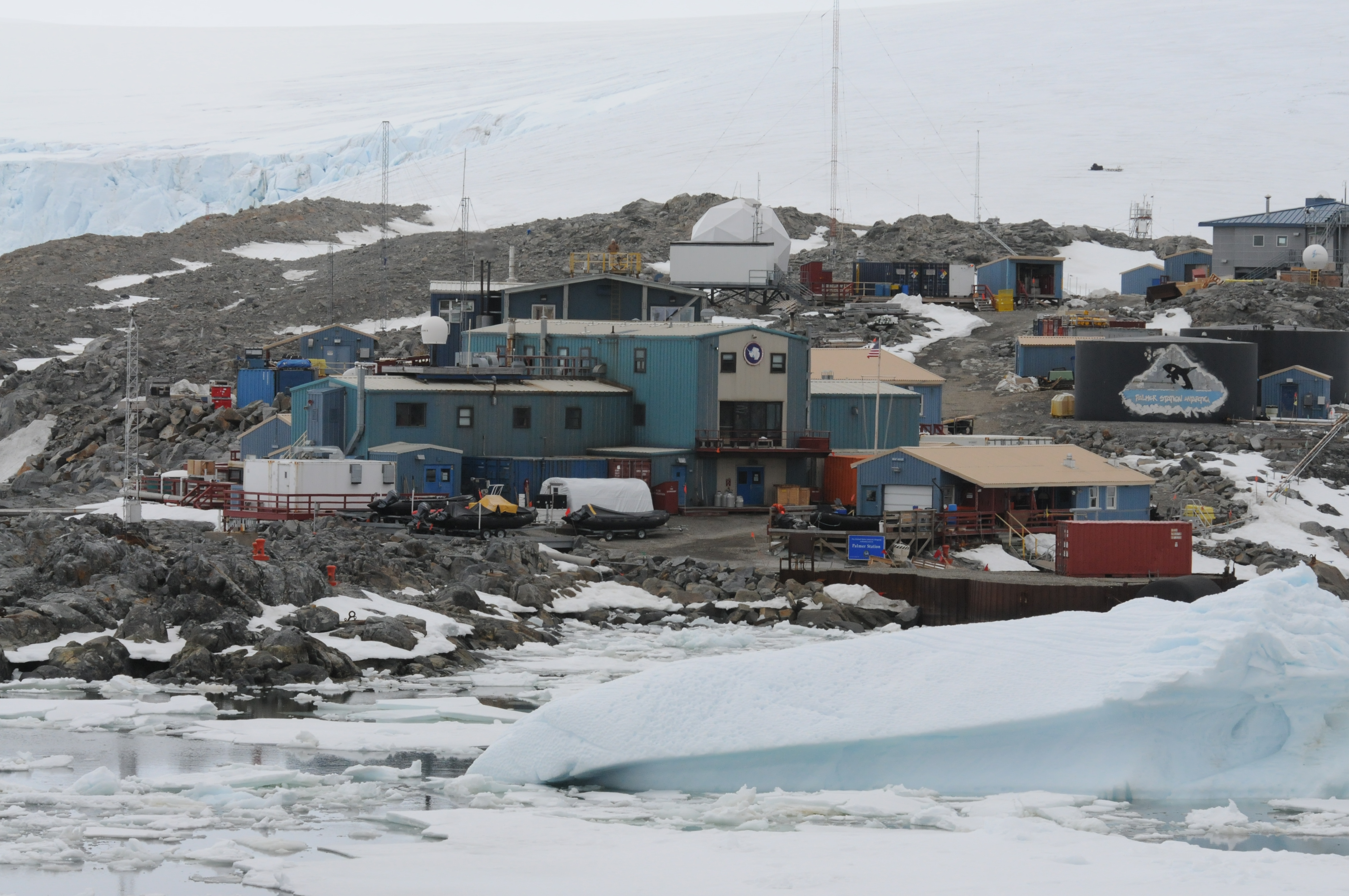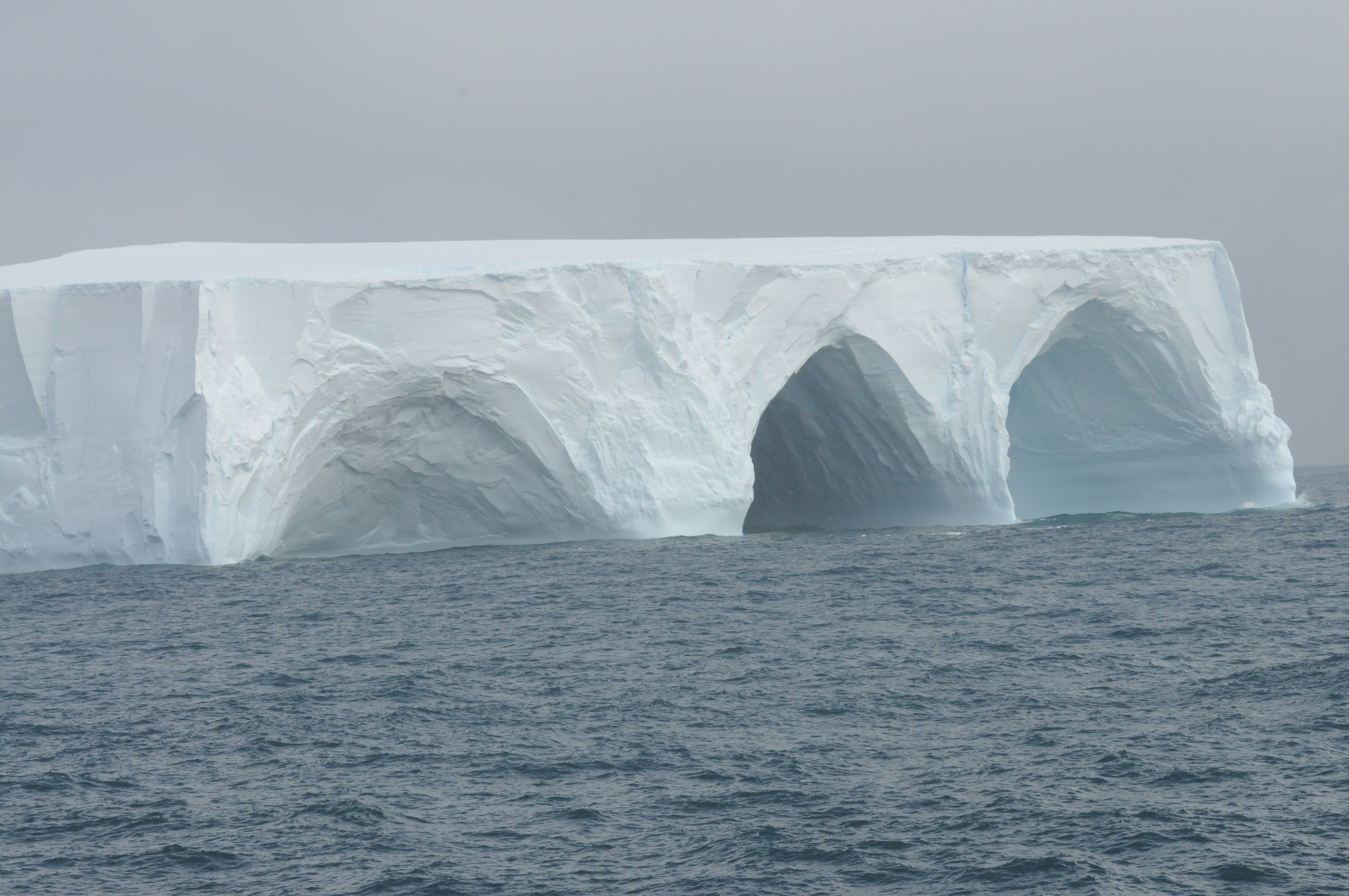By: Erin Pickett
We had an eventful weekend on the LMG, visiting a British research station on Adelaide Island on Saturday and nearby Avian Island on Sunday. We arrived at Rothera Station early Saturday morning and traded most of our LTER team for a group of British scientists. The British base was very welcoming and had a full of day of crevassing, skiing, hiking and boating activities planned for us. Meanwhile, their scientists took advantage of the use of our ship for a few offshore science projects.
We “whalers” took advantage of the free time and good weather and spent the morning looking for Minke, Humpback and killer whales in the vicinity of Rothera. We had hoped to put a stop to our long streak of days without whales but unfortunately there were no whales to be seen. Despite this, we had a great morning taking photos of the many icebergs, leopard seals, Wilson’s storm petrels and blue-eyed shags in the area.
Sunday was a beautiful bluebird day and we had a gorgeous transit from Rothera around the south end of Adelaide Island to Avian Island. We left two of our LTER colleagues on Avian and they will be camping there for the week. They will be studying the island’s population of Adelie penguins, conducting diet studies and assessing reproductive success by weighing, measuring and counting Adelie chicks.
Spending a week each year on Avian Island is an important aspect the seabird component of the LTER program because Avian Island serves as a sort of “control” study site, to compare to the more rapidly changing Palmer site. The differing physical and biological conditions at each of these two sites allow scientists to assess how things like local sea-ice conditions and biological productivity affect each of the local penguin populations. There are around 80,000 Adelie penguins on Avian, so you can imagine that we could smell the krill-colored guano long before we landed on the island.































